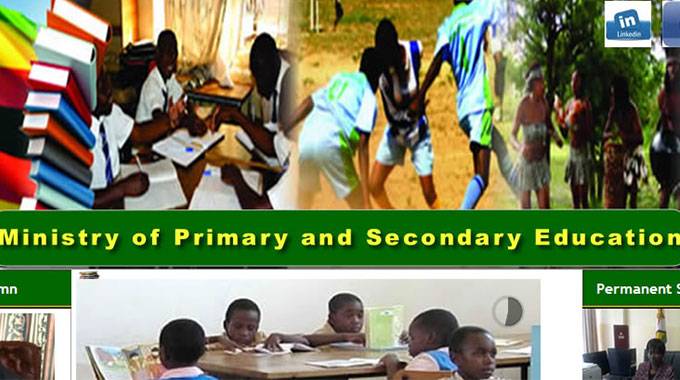Nqobile Tshili, [email protected]
THE Government has introduced significant changes to the Heritage-Based Curriculum (HBC), focusing on career readiness by integrating visual and performing arts, as well as technical and vocational education, particularly at the Advanced Level.
The aim is to guide students in identifying their career paths early, with schools expected to conduct pupil profiling to help them make informed choices.
Under the new curriculum, five key career paths have been identified: sciences, languages and humanities, commercials, visual and performing arts and technical and vocational education. These pathways are designed to ensure that students graduate with practical skills to support their livelihoods.
The Ministry of Primary and Secondary Education’s new curriculum framework aims to reduce the workload for students by consolidating several learning areas into broader subjects, from the infant level to advanced level. This streamlined approach is intended to make learning more focused and efficient.
In his preamble statement, President Mnangagwa said the HBC should enable local communities to benefit from their own resources through economic solutions and the provision of goods and services by pupils.
“Our pupils will solve their own and community problems using locally available resources. My Government underscores the urgent need for a comprehensive and transformative approach to improve the quality, relevance and inclusiveness of education through this Heritage-Based Curriculum for Primary and Secondary Education 2024-2030,” he said.
President Mnangagwa also highlighted the importance of science, technology, engineering, arts and mathematics (Steam) education, emphasising that entrepreneurship plays a key role in industrialisation and economic growth.
“The Heritage-Based Curriculum should emphasise the need for value addition, beneficiation, refinement and innovation as pivotal to industrialisation, thereby leading to economic growth,” he said.
The HBC introduces several changes at the infant level, reducing the number of subjects from eight to six. Previously, subjects like English Language, Indigenous Language, Visual and Performing Arts, Physical Education and Mass Displays, Mathematics and Science, Family and Heritage Studies and ICT were taught separately.
The new curriculum merges these areas into six core subjects: Indigenous Language, English Language, Mathematics, Science and Technology, Physical Education and Arts and Social Sciences.
At the junior level, subjects have been further reduced from 11 to six. Visual and Performing Arts, Physical Education, Sport, and Mass Displays have been merged into Physical Education and Arts, while Science, Agriculture, Design and Technology and ICT have been combined into Science and Technology. Family, Religion and Moral Education, Guidance and Counselling, Life Skills Education and Heritage Studies have been consolidated into Social Sciences.
“The six learning areas are allocated a total of 37 hours per week and per grade,” reads the curriculum guideline. Science and Technology will have an extra hour, while other subjects will be taught within six hours per week.
The Ministry also recognises cross-cutting contemporary themes and global issues, such as health, nutrition and well-being, climate change, disaster risk management, business enterprise skills and career guidance, which are to be embedded within the new learning areas for pupils.
The guidelines further state that heritage, gender, child rights and responsibilities should also be incorporated into studies.
According to the curriculum guidelines, the Ministry aims to ensure that pupils are trade-tested when they reach Form Four and obtain the National Foundation Certificate.
It expects pupils to explore a broad-based curriculum in which they acquire the necessary competencies (skills, knowledge, values and attitudes) from different learning areas, with a focus on their competences and career pathways.
“A broad-based approach is adopted to achieve the general education learning outcomes in this first wave of a four-year programme. Pupils will, however, be categorised according to preferred areas of proficiency when they enrol for secondary education,” reads the curriculum guidelines.
“This will enable them to sit for the National Foundation Certificate and be trade-tested in various fields when in Form Four, as per the Zimbabwe National Qualification Framework (ZNQF).”
The Ministry also mandates that students from Form One to Form Four study Mathematics/Functional Mathematics, Combined Science and Heritage Studies.
In addition, students will choose three to six electives from specific pathways, including sciences, languages, humanities, commercials, technical and vocational education and physical education and arts.

“The recommended number of learning areas for study per pupil is nine,” reads the curriculum guide.
While science, commercials and arts have traditionally been the main study areas for advanced level, the Ministry has broadened these fields.
“The choice of learning areas at the upper secondary school level is informed by the pathways followed by respective pupils in Forms Three and Four. Learning areas in Forms Five and Six prepare pupils for options such as tertiary and university education as well as self-employment,” reads the guidelines.
“Pupils at this level are encouraged to study three learning areas from a specified pathway. Pupils can choose combinations across pathways in line with their career aspirations: Sciences, Visual and Performing Arts, Humanities, Technical and Vocational Education and Training (TVET) and Commercials.”
At the advanced level, students can choose subjects based on their career aspirations. Subjects such as film, musical arts and theatre arts will now be offered at this level, alongside traditional subjects like sciences and commercials. Students will be encouraged to pursue subject combinations that align with their career goals, whether in tertiary education, university, or self-employment.
The curriculum also recognises the needs of students with special educational requirements. The principle of inclusivity will guide the provision of education, with functional assessments determining the appropriate placement and support for these students, whether in special schools, units, or regular schools with additional support.
The new curriculum is designed to equip students with the skills and knowledge necessary for success in an increasingly competitive world, while also ensuring they can contribute meaningfully to their communities and the nation at large. — @nqotshili

